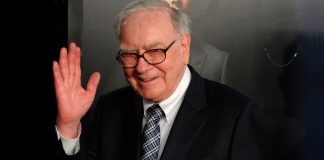Recent events across the United States reveal a complex interplay of social media influence, evolving political strategies, and significant workforce adjustments. This collection of developments underscores how quickly landscapes shift, and the unexpected roles technology and social trends now play in shaping the nation’s political and social life.
The Rise of Digital Campaigning & the Power of Influencers
The traditional playbook for political campaigns is rapidly evolving. Zohran Mamdani’s campaign for mayor of New York City showcased a successful model for leveraging online communities and fostering genuine fan engagement. In contrast, Andrew Cuomo’s campaign demonstrates a shift toward courting right-wing social media influencers, a strategy with potential benefits and notable risks given the polarizing nature of modern online discourse. This illustrates a widening trend: politicians increasingly rely on these online personalities to amplify their message and rally support, highlighting the significant influence that social media has over political influence.
The Trump administration has long recognized this potential. They’ve effectively created their own content creation infrastructure to support their agenda – a tactic designed to control the narrative surrounding issues like immigration and law enforcement.
This shift has broader implications, as Donald Trump is increasingly utilizing AI-generated videos for his social media posts. WIRED’s investigation into this practice raises concerns about the authenticity of online political messaging and the potential for manipulated content to sway public opinion.
Election Infrastructure and its Vulnerabilities
A concerning development involves Scott Leiendecker, a former GOP operative, acquiring Dominion Voting Systems, the company that provides voting systems used in 27 states. This consolidation of power over election infrastructure raises significant questions about potential conflicts of interest and risks to the integrity of US elections. Election experts are expressing their uncertainty about the implications of this acquisition, underscoring the need for greater transparency and oversight within the election technology sector.
Public Sector Workforce Challenges
The public health sector is facing a considerable crisis. The Centers for Disease Control and Prevention (CDC) has experienced a significant reduction in workforce, losing approximately 3,000 employees since January. This decline in staffing levels, compounded by previous layoffs and departures, raises concerns about the CDC’s ability to effectively respond to future public health emergencies.
Simultaneously, federal workers find themselves caught in the crossfire of political gridlock, facing job insecurity and anxieties about the future. The situation highlights the human cost of political disputes and the need for policies that protect the livelihoods of public servants.
The Price of Free Speech – and the Threat to Academic Freedom
The rise of online activism also carries a dark side. Rutgers historian Mark Bray, author of a book about Antifa, has faced a relentless campaign of online harassment and death threats, forcing him to attempt to flee the US. This incident demonstrates the chilling effect that online extremism can have on academic freedom and the dangers faced by individuals who challenge dominant narratives.
Reimagining Creator Economy – Beyond Clicks and Engagement
Beyond political and governmental shifts, a broader conversation is emerging within the creator economy. Patreon CEO Jack Conte is advocating for a move away from the pursuit of fleeting clicks and engagement, encouraging creators to focus on cultivating loyal, long-term fans. His vision for a more sustainable creator ecosystem reflects a desire to foster deeper connections between creators and their audiences, and to reward meaningful contributions over short-term gains.
Analyzing Election Outcomes – Lessons Learned
Finally, Steve Kornacki from NBC offered insights into the recent election results, suggesting that Donald Trump’s actions and rhetoric may have ultimately hindered Republicans’ performance. This perspective underscores the importance of strategic messaging and the potential for divisive politics to backfire, even among traditionally supportive constituencies.
This constellation of events—from the rise of influencer-driven campaigns to workforce reductions, academic persecution, and a reimagining of creator economy—demonstrates the rapid pace of change occurring in the American political and social landscape and how critical it is to understand the shifting dynamics that shape our future. It is clear that technology, media, and political forces are intertwined, demanding constant adaptation and vigilant scrutiny























